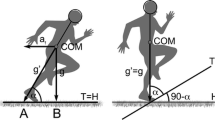Abstract
Background
During a race, competing cyclists often cooperate by alternating between leading and drafting positions. This approach allows them to maximize velocity by using the energy saved while drafting, a technique to reduce the overall drag by exploiting the leader’s slipstream. We have argued that a similar cooperative drafting approach could benefit elite marathon runners in their quest for the sub-2-hour marathon.
Objective
Our aim was to model the effects of various cooperative drafting scenarios on marathon performance by applying the critical velocity concept for intermittent high-intensity running.
Methods
We used the physiological characteristics of the world’s most elite long-distance runners and mathematically simulated the depletion and recovery of their distance capacity when running above and below their critical velocity throughout a marathon.
Results
Our simulations showed that with four of the most elite runners in the world, a 2:00:48 (h:min:s) marathon is possible, a whopping 2 min faster than the current world record. We also explored the possibility of a sub-2-hour marathon using multiple runners with the physiological characteristics of Eliud Kipchoge, arguably the best marathon runner of our time. We found that a team of eight Kipchoge-like runners could break the sub-2-hour marathon barrier.
Conclusion
In the context of cooperative drafting, we show that the best team strategy for improving marathon performance time can be optimized using a mathematical model that is based on the physiological characteristics of each athlete.




Similar content being viewed by others
References
International Association of Athletics Federations. Competition rules 2018–2019. Monaco: International Association of Athletics Federations; 2017.
Hoogkamer W, Kram R, Arellano CJ. How biomechanical improvements in running economy could break the 2-hour marathon barrier. Sports Med. 2017;47:1739–50.
Broker JP, Kyle CR, Burke ER. Racing cyclist power requirements in the 4000-m individual and team pursuits. Med Sci Sports Exerc. 1999;31:1677–85.
Heimans L, Dijkshoorn WR, Hoozemans MJ, de Koning JJ. Optimizing the team for required power during track cycling team pursuit. Int J Sports Physiol Perform. 2017;12:1385–91.
Di Prampero PE, Atchou G, Brückner JC, Moia C. The energetics of endurance running. Eur J Appl Physiol Occup Physiol. 1986;55:259–66.
Joyner MJ. Modeling: optimal marathon performance on the basis of physiological factors. J Appl Physiol. 1991;70:683–7.
Jones AM, Vanhatalo A. The ‘critical power’ concept: applications to sports performance with a focus on intermittent high-intensity exercise. Sports Med. 2017;47:65–78.
Morton RH, Billat LV. The critical power model for intermittent exercise. Eur J Appl Physiol. 2004;91:303–7.
Skiba PF, Chidnok W, Vanhatalo A, Jones AM. Modeling the expenditure and reconstitution of work capacity above critical power. Med Sci Sports Exerc. 2012;44:1526–32.
Hill DW. The critical power concept: a review. Sports Med. 1993;16:237–54.
Poole DC, Burnley M, Vanhatalo A, et al. Critical power: an important fatigue threshold in exercise physiology. Med Sci Sports Exerc. 2016;48:2320–34.
Skiba PF, Fulford J, Clarke DC, et al. Intramuscular determinants of the ability to recover work capacity above critical power. Eur J Appl Physiol. 2015;115:703–13.
Jones AM, Vanhatalo A, Burnley M, et al. Critical power: implications for determination of VO2max and exercise tolerance. Med Sci Sports Exerc. 2010;42:1876–90.
McDermott KS, Hill DW, Forbes MR. Application of the critical power concept to outdoor running [abstract]. Med Sci Sports Exerc. 1993;25:S109.
Hughson RL, Orok CJ, Staudt LE. A high velocity treadmill running test to assess endurance running potential. Int J Sports Med. 1984;5:23–5.
Vanhatalo A, Doust JH, Burnley M. Determination of critical power using a 3-min all-out cycling test. Med Sci Sports Exerc. 2007;39:548–55.
Broxterman RM, Ade CJ, Poole DC, et al. A single test for the determination of parameters of the speed–time relationship for running. Respir Physiol Neurobiol. 2013;185:380–5.
Brueckner JC, Atchou G, Capelli C, et al. The energy cost of running increases with the distance covered. Eur J Appl Physiol Occup Physiol. 1991;62:385–9.
Nicol C, Komi PV, Marconnet P. Effects of marathon fatigue on running kinematics and economy. Scand J Med Sci Sports. 1991;1:195–204.
Kyröläinen H, Pullinen T, Candau R, et al. Effects of marathon running on running economy and kinematics. Eur J Appl Physiol. 2000;82:297–304.
Lacour JR, Bourdin M. Factors affecting the energy cost of level running at submaximal speed. Eur J Appl Physiol. 2015;115:651–73.
Earnest CP, Foster C, Hoyos J, et al. Time trial exertion traits of cycling’s Grand Tours. Int J Sports Med. 2009;30:240–4.
Pugh LG. Oxygen intake in track and treadmill running with observations on the effect of air resistance. J Physiol. 1970;207:823–35.
Pugh LG. The influence of wind resistance in running and walking and the mechanical efficiency of work against horizontal or vertical forces. J Physiol. 1971;213:255–76.
Cheuvront SN, Haymes EM. Thermoregulation and marathon running: biological and environmental influences. Sports Med. 2001;31:743–62.
Hoogkamer W, Kipp S, Frank JH, et al. A comparison of the energetic cost of running in marathon racing shoes. Sports Med. 2018;48:1009–19.
Olds T. The mathematics of breaking away and chasing in cycling. Eur J Appl Physiol Occup Physiol. 1998;77:492–7.
Acknowledgements
We thank Rodger Kram and Shalaya Kipp for helpful feedback and comments regarding an earlier version of this manuscript. We also thank Andrew Jones and Philip Skiba for additional clarifications of their models.
Author information
Authors and Affiliations
Corresponding author
Ethics declarations
Funding
No sources of funding were used to assist in the preparation of this article.
Conflict of interest
Wouter Hoogkamer, Kristine L. Snyder, and Christopher J. Arellano declare that they have no conflicts of interest relevant to the content of this article.
Electronic supplementary material
Below is the link to the electronic supplementary material.
Rights and permissions
About this article
Cite this article
Hoogkamer, W., Snyder, K.L. & Arellano, C.J. Modeling the Benefits of Cooperative Drafting: Is There an Optimal Strategy to Facilitate a Sub-2-Hour Marathon Performance?. Sports Med 48, 2859–2867 (2018). https://doi.org/10.1007/s40279-018-0991-4
Published:
Issue Date:
DOI: https://doi.org/10.1007/s40279-018-0991-4




